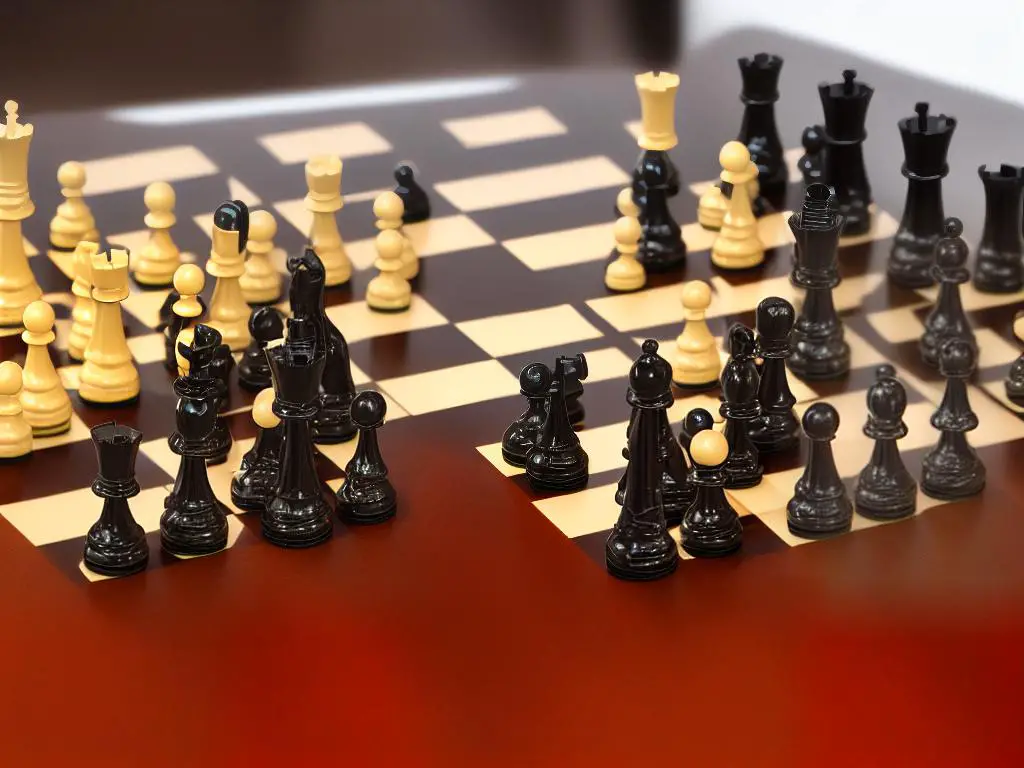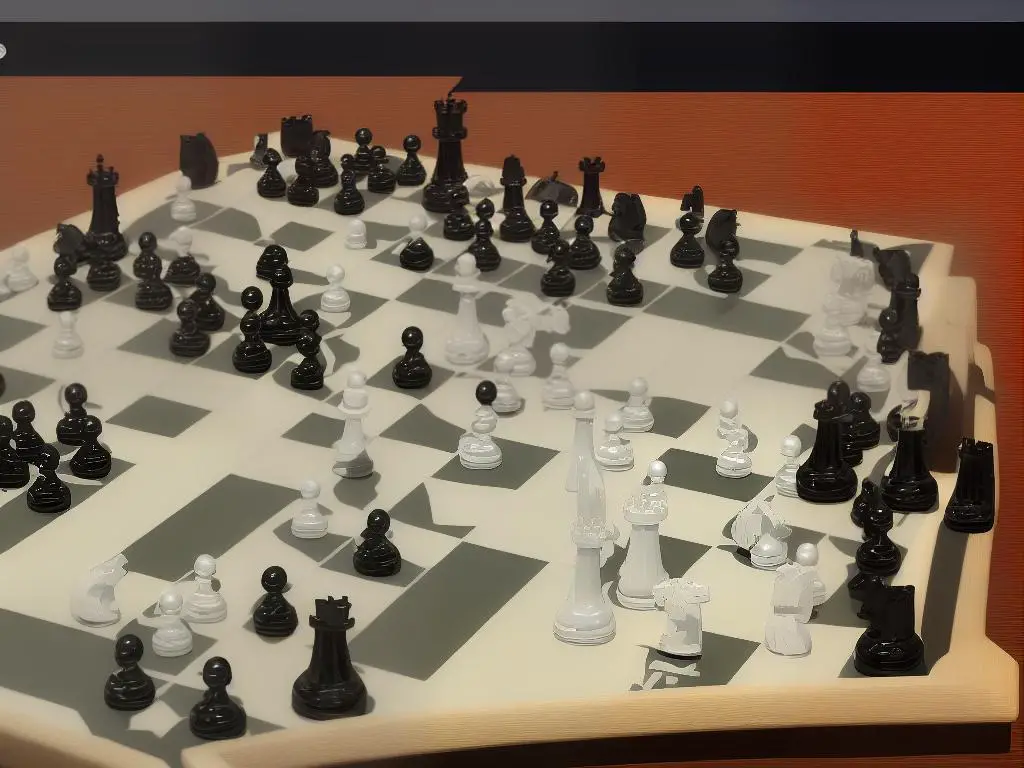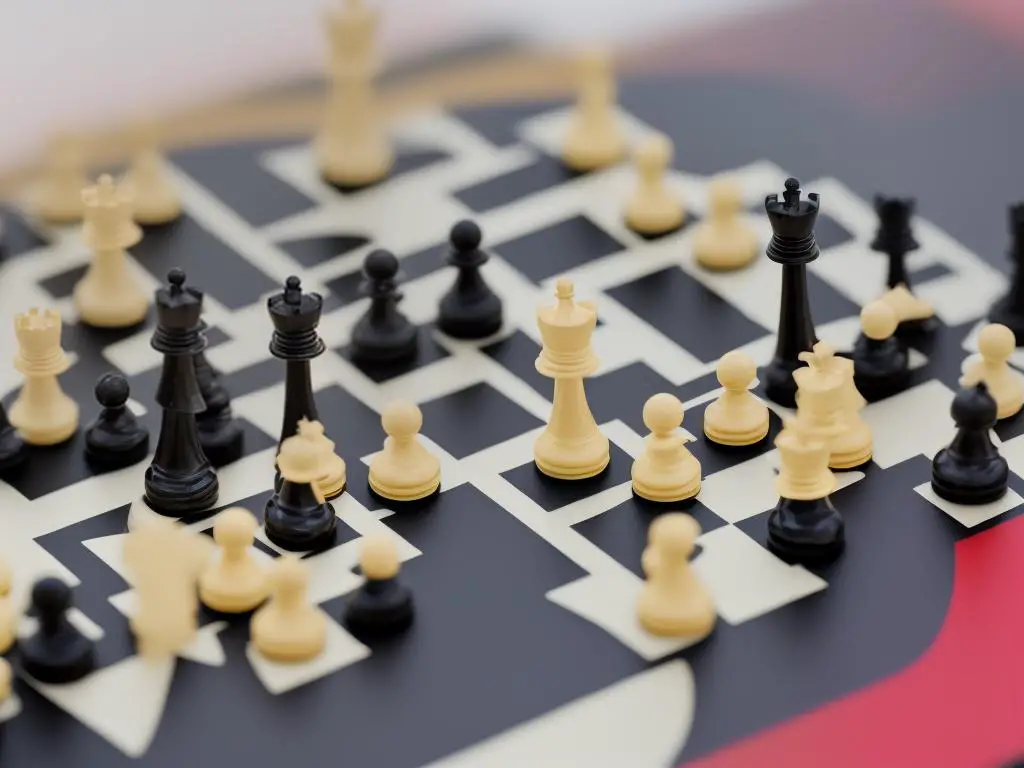Ultimate Guide to Chess Engines & Software
Chess engines and software have revolutionized the way we play and analyze the game, pushing the boundaries of human understanding and skill. By delving into the history and workings of these engines, as well as their integration into gameplay and training, we can gain greater insight into the fascinating world of computer-assisted chess. Whether you are a casual player or an ambitious competitor, understanding the role of chess engines in our modern game can help improve your strategic approach and decision-making, while also providing a newfound appreciation for this centuries-old sport.
History of Chess Engines
History of Chess Engines
The genesis of chess engines can be traced back to the late 1960s when Richard Greenblatt developed one of the first-known engines, called ‘Mac Hack VI,’ at the Massachusetts Institute of Technology (MIT). Though not a formidable competitor against human players, the engine heralded a new era in artificial intelligence within the realm of chess. Rapid advancements unfolded in the 1970s and 1980s, giving rise to commercial engines such as Chess 4.0, MyChess, and Sargon, created by the likes of Larry Atkin, David Slate, and Dan Spracklen. Built on personal computers, these engines relied on improved valuation and search algorithms.
By the 1990s, chess engines were running on increasingly powerful hardware, exemplified by IBM’s Deep Blue. In 1996, Deep Blue made headlines after becoming the first-ever engine to beat world chess champion Garry Kasparov in a game. A year later, it won a six-game match against Kasparov, underscoring the immense potential of artificial intelligence and high-performance computing for chess engines.
The rapid technological advancements in the 2000s gave rise to superior engines such as Rybka, Houdini, and Stockfish, which leveraged multicore processors to improve their speed and search algorithms’ depth. Thus, chess engines became increasingly dominant over human players. In recent years, machine learning and neural networks have revolutionized the field, with Google’s AlphaZero being a prime example. AlphaZero, which uses a deep neural network and self-play without prior knowledge or training data, defeated the then top-ranked Stockfish in a 100-game match in 2017, propelling the realm of chess engines and AI technology into a new era.

How Chess Engines Work
Chess Engine Components
A central aspect of a chess engine is its search algorithm, which explores potential moves and corresponding positions in the game. One widely-utilized search algorithm is the minimax, particularly its optimized variant called alpha-beta pruning. These algorithms predict the opponent’s best moves and their subsequent responses by examining the game tree up to a certain depth. This allows the engine to account for various outcomes arising from specific positions, ensuring a comprehensive analysis of the game and bolstering the engine’s ability to compete against human players.
Evaluation Functions
Another crucial aspect that powers modern chess engines are the evaluation functions, which are mathematical models used to estimate the likelihood of winning or losing in a given position. These functions utilize various factors that play a role in the game, such as material count, piece mobility, and king safety, among other elements. A carefully crafted evaluation function may be responsible for a chess engine’s strategic choices and overall performance, as it provides a quantifiable means to assign each position with a score. For this reason, sophisticated chess engines continuously update and fine-tune their evaluation functions to become even more precise and efficient.
Endgame Databases
Endgame databases, often known as tablebases, serve as an essential resource for chess engines navigating the final phase of the game. These databases contain exhaustive knowledge about specific endgame positions, permitting the engine to consult accurate and pre-established information as opposed to conducting extensive search processes. Tablebases inform chess engines about whether specific endgame positions result in victory, defeat, or a draw, alongside the exact sequence of moves needed to achieve the best possible outcome. Consequently, incorporating endgame databases can significantly enhance a chess engine’s playing strength and decision-making accuracy during critical moments in the game.
Tactics and Calculation
Chess engines are also proficient at identifying and calculating tactics, which are short sequences of moves that lead to a specific advantage or goal. To achieve this, the engine calculates every possible move in each position and uses its evaluation function to determine the best choice. As the search process deepens, the engine successively refines its understanding of the position and anticipates the opposition’s responses. Consequently, chess engines are likely to identify tactics faster and more accurately than human players, attributing to their superiority in gameplay.
Innovation with AI and Machine Learning in Chess Engines
In recent years, artificial intelligence (AI) and machine learning techniques have been leveraged to further enhance chess engine performance. AI-based methods such as neural networks have contributed to developing unprecedented chess playing strength, as exhibited by engines like AlphaZero and Leela Chess Zero (LCZero). These engines utilize reinforcement learning, which enables them to hone their decision-making skills through millions of self-played games, ultimately resulting in highly refined evaluation functions and strategic agility. The integration of AI technologies with traditional chess engine principles promises to continue pushing the boundaries of the game and related software, with engines like Stockfish leading the way.

Popular Chess Engines
Stockfish: A Powerful Open-Source Chess Engine
Stockfish is a highly powerful and popular open-source chess engine that consistently ranks among the strongest engines in the world. It is derived from Glaurung, another open-source engine that dates back to 2004.
One of Stockfish’s greatest strengths is its ability to evaluate positions extremely quickly, thanks to its efficient search algorithm and extensive opening book. Stockfish is also highly configurable, allowing users to tailor its strength and style to match their preferences.
While Stockfish remains the strongest open-source engine, its primary weakness is that it lacks support for advanced tablebases, such as Syzygy, which can sometimes result in suboptimal endgame play. Nonetheless, Stockfish represents the advancements AI and machine learning can offer to the world of chess engines and software.
Komodo
Another noteworthy chess engine is Komodo, developed by Grandmaster Larry Kaufman and Mark Lefler. Komodo emphasizes a strategic and human-like style, making it popular among players who seek a more positional, rather than tactical, engine. It combines deep positional understanding with powerful search algorithms to deliver impressive performance.
One of Komodo’s unique features is its MCTS (Monte Carlo Tree Search) mode, which enhances its creativity and evaluation capabilities. Despite these strengths, some argue that Komodo lacks the raw tactical acumen of Stockfish, making it a somewhat weaker option for players who prefer tactical skirmishes.
Leela Chess Zero (LCZero or Lc0)
Leela Chess Zero (LCZero or Lc0) is a newer entrant to the realm of chess engines, but its groundbreaking approach has made it a major contender. Based on Google’s AlphaZero, this open-source engine employs neural networks and machine learning to teach itself to play from scratch. This self-learning approach has resulted in a unique, almost “human-like” playing style.
Lc0 performs particularly well in complex middlegame positions, where the battle between its powerful, intuition-based evaluations and traditional engines’ brute-force searches can lead to intriguing clashes. On the downside, Lc0 relies heavily on powerful hardware (usually GPUs) to perform optimally and to achieve its full potential.
Houdini
Houdini, developed by Belgian programmer Robert Houdart, is another strong contender in the world of chess engines. Known for its remarkable ability to escape difficult positions like a modern-day Harry Houdini, this engine boasts excellent tactical understanding and defensive capabilities. It can solve even the most intricate combinations and is a powerful tool for determining the outcome of unclear positions.
Although Houdini is considered slightly less strong in overall performance compared to Stockfish and Lc0, its unique skill set and resilience make it a popular choice for users looking for an engine with an exceptional defensive posture.
Conclusion
As technology continues to advance, popular chess engines have made significant contributions to modern chess by providing exciting discoveries of fresh ideas, opening novelties, and deep strategic insights that push the limits of human understanding. The ever-increasing capabilities of these engines are changing the way we perceive and play the ancient and ever-evolving game of chess.

Improving Chess Skills with Software
Chess engines and software have become powerful and versatile tools for players looking to improve their skills, offering not only various levels of difficulty but also valuable insights into game analysis, pattern recognition, and decision-making. By utilizing these tools effectively, players of all levels can expedite their learning process, identify their strengths and weaknesses, and ultimately achieve a more well-rounded and competitive chess game as they continue their pursuit of mastery in this fascinating realm.
Training Against Computer Opponents
Training against computer opponents is a valuable resource for players looking to sharpen their tactical and strategic understanding of the game. These chess engines are designed to simulate human opponents, offering a range of difficulty levels from beginner to grandmaster. This allows players to challenge themselves by incrementally increasing the level of competition, ultimately honing their skills against progressively tougher opponents. Many software programs also include customizable options that allow users to focus on specific areas of their game, such as opening theory or endgame technique, by adjusting the computer’s behavior or priorities during gameplay.
Analyzing Games
Analyzing one’s games is a crucial component of improvement, and chess software provides many tools to help with this process. By importing the moves from a completed game, players can utilize powerful engines to dissect each move and reveal hidden tactical opportunities or positional errors. In addition to providing objective feedback on the quality of each move, these programs can also help users explore alternative lines of play and demonstrate the implications of these alternative decisions, deepening their understanding of the game.
Targeting Weaknesses
Another valuable aspect of chess software is its ability to target specific weaknesses within a player’s game. By analyzing a user’s performance across multiple games, these programs can identify patterns and tendencies that may be holding the player back. This information can be invaluable in guiding the user’s training regimen, allowing them to focus on addressing these weaknesses through targeted exercises and drills. Some software even includes built-in training modules that are designed to help promote improvement in specific areas, such as tactics or positional understanding.
Visualization Tools in Chess Software
Chess software offers various visualization tools that can help players better grasp complex strategic and tactical concepts. For example, many programs provide sophisticated board visualization aids, such as arrows and colored squares, to assist users in understanding and internalizing the principles of a given position. Furthermore, these tools allow for simulating ‘what-if’ scenarios, enabling players to experiment with different move sequences and gain a deeper appreciation for the underlying strategy and tactics at play. Engaging with these features can accelerate the development of chess skills and boost players’ confidence in their decision-making abilities.

Chess GUIs and Interfaces
Chess GUIs: The Interactive Bridge Between Users and Engines
In the context of chess engines and software, it is crucial to consider the graphical user interfaces (GUIs) that facilitate users’ interaction with these powerful tools. Serving as an interactive bridge between the user and the engine, GUIs significantly enhance the overall experience by offering various core features, usability, and compatibility with chess engines and software. This seamless integration proves invaluable to chess enthusiasts and professionals alike, as the combination of visualization tools and intuitive GUIs enables users to fully harness the potential of chess engines and software for learning and growth in the game.
Features of Chess GUIs
Numerous GUIs are available, each with its unique features and advantages, but the primary function remains to facilitate seamless interaction with the chess engine. Essential aspects provided by these GUIs include:
- Displaying the chessboard
- Managing and organizing games
- Analyzing positions and moves
- Customizing the board
- Importing and exporting game notation, as well as saving and loading game databases
- Competing online with other players
Catering to Different Skill Levels
Chess GUIs cater to various skill levels, from beginners to professionals. For beginners, some interfaces have built-in tutorials and tools for learning chess strategies and tactics. On the other hand, professionals often need in-depth analysis and multiple-engine support to make informed decisions. The usability of a chess GUI depends on how the interface manages these varying requirements; hence, it is crucial for users to select a GUI that matches their skills and needs.
Compatibility with Chess Engines and Software
Compatibility with chess engines and software is a critical aspect as well. Popular chess engines, such as Stockfish, Leela Chess Zero, and Komodo, have multiple compatible GUIs, allowing users to benefit from their powerful chess analysis capabilities. Additionally, interfaces need to support standard chess formats like PGN, FEN, and UCI to ensure smooth communication and enable users to leverage various chess software and tools.
Conclusion
Chess engines and software provide invaluable resources for chess players looking to improve their skills and understanding of the game. The use of chess graphical user interfaces (GUIs) significantly enhances the interaction between users and these engines, by offering core features, promoting usability, and ensuring compatibility. Thus, selecting the right chess GUI is crucial for optimizing one’s overall chess experience.

Online Chess Platforms and Apps
Online Chess Platforms
Online chess platforms such as Chess.com and Lichess.org are excellent options for interacting with powerful chess engines and expanding one’s knowledge of the game.
- Chess.com
- Lichess.org
Chess.com employs the Komodo Chess Engine to offer real-time analysis during gameplay. The platform is feature-rich, including lessons, tactics puzzles, articles, and Chess.com TV for live grandmaster games. Its large global community ensures users can always find opponents of similar skill levels for an engaging match.
Lichess utilizes the renowned Stockfish chess engine to deliver in-depth game analyses and evaluations. The platform is entirely free and allows users to create an account, customize settings, and find opponents for live or correspondence chess. Supporting resources such as puzzles, opening explorers, and study tools help players refine their skills. Furthermore, Lichess’ dedicated mobile app guarantees anytime, anywhere access to chess lessons and games.
Chess With Friends
For a social and casual chess experience, Chess With Friends is a popular mobile app option.
In this app, players can connect with their Facebook friends or find new friends through username searches and enjoy a real-time or turn-based game. While Chess With Friends does not provide advanced analysis tools like Chess.com or Lichess, it is a perfect application for those looking to have a friendly and casual game with friends.
ChessBase
For players more focused on improving their skills and analyzing their games, ChessBase is the premier software for chess database management and analysis.
ChessBase provides access to a vast library of historic and current games, enabling players to study various openings, middlegame strategies, and endgame techniques. The software also offers seamless integration with top chess engines, including Stockfish and Houdini, allowing users to receive detailed computer analysis of their games.
Chess Tactics Pro
Another useful and popular app for chess players looking to sharpen their tactics is Chess Tactics Pro.
This mobile app offers thousands of puzzles, categorized by themes and difficulty levels, allowing users to train their tactical vision and pattern-recognition skills. It also incorporates the Stockfish chess engine to analyze moves and provide feedback to users. This app is a great supplemental tool for individual training and can be effectively used in combination with other platforms and software for an overall improvement in one’s game.

Overall, chess engines and software have come a long way since their inception, growing ever more powerful and influential in shaping the way we experience and engage with the game. By exploring the various facets of this technology, from their fundamental principles and history to their applications in training, online platforms, and user interfaces, we have unveiled greater understanding and awareness of computer-assisted chess. Embracing these powerful tools and resources will not only elevate our abilities but also help us to appreciate the complex and beautiful intricacies of this timeless pursuit.
